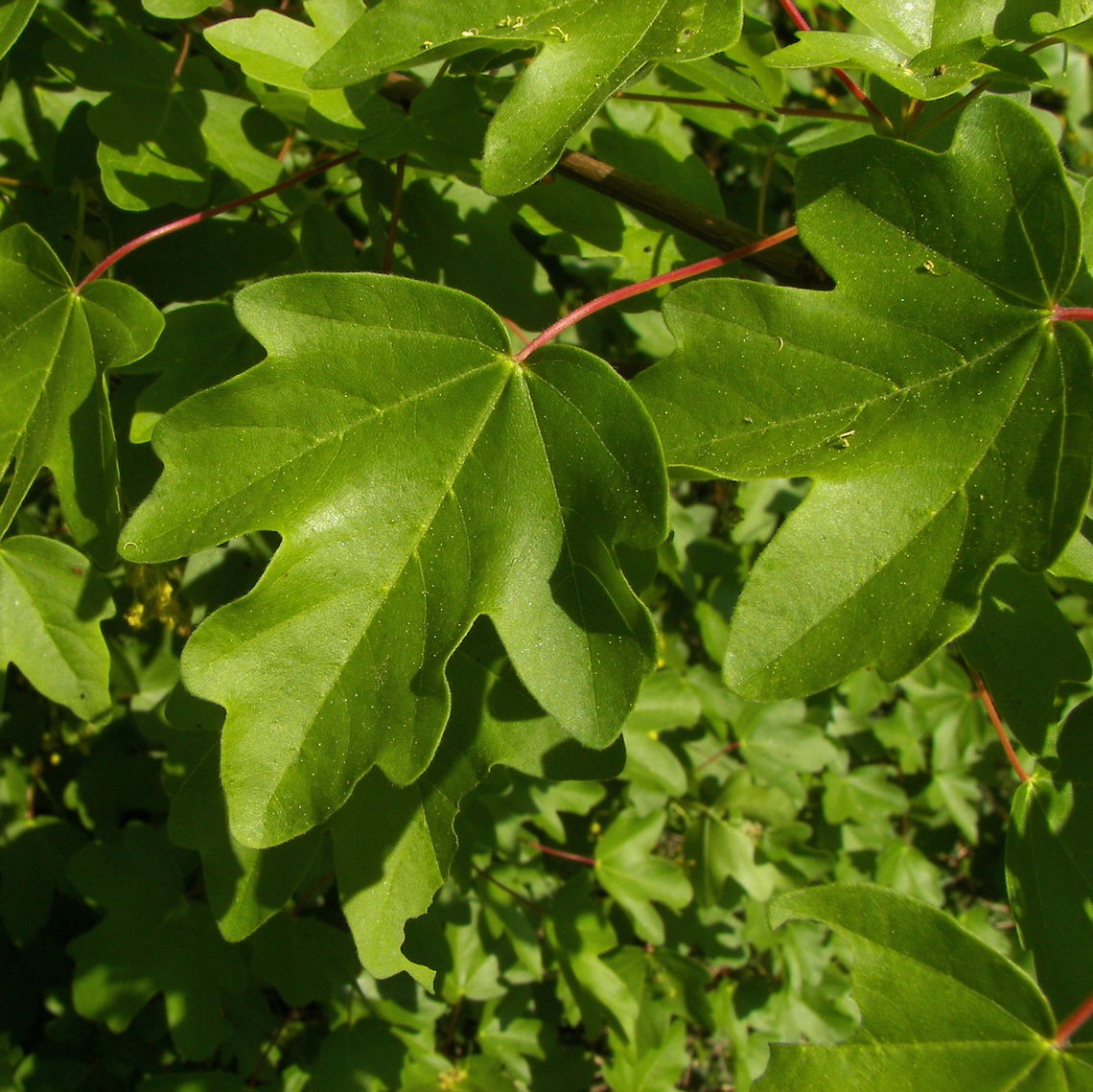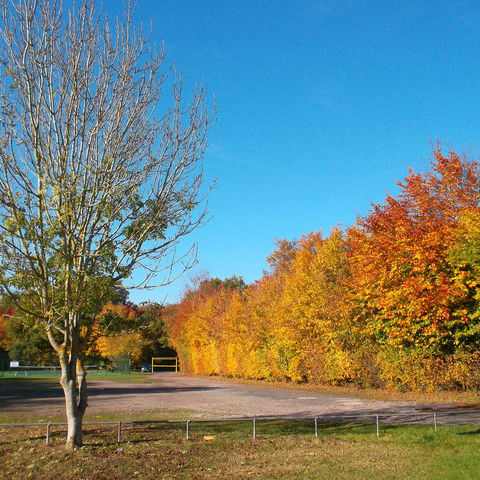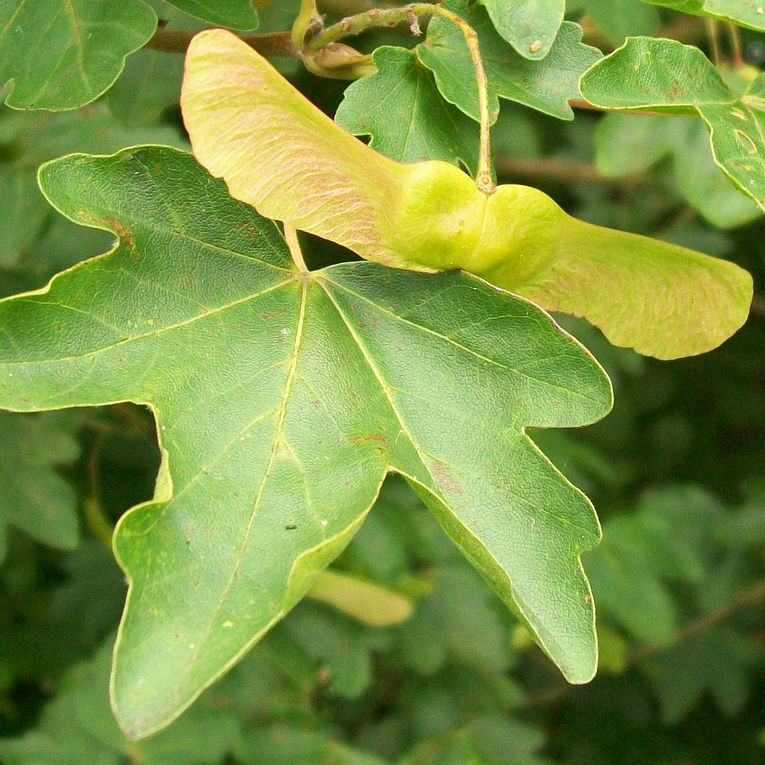Hedge Maple (Acer campestre)
As suggested by its name, the hedge maple is often used for hedging. This tree has a broad and rounded shape. Its leaves are dark green and each leaf has 5 rounded lobes. Its bark is dark gray and ridged. Around the tree, you will likely spot samaras, the tree's fruit, that tend to drop in late spring and summer. The hedge maple's fruits attract birds, insect pollinators and small mammals.
Family: Aceraceae (Maple)
Characteristics: The 2-inch to 4-inch-long leaves are dark green and have 5 rounded lobes. In the fall, leaves turn yellow. Like all maples, the hedge maple produces samaras (paired winged fruits). Bark is dark gray and is lightly ridged and furrowed. This tree has a dense canopy, with a rounded shape, and has low lying branches. It usually grows 20-25 feet high and wide, though can reach up to 75 feet in height.
Foliage: Deciduous (leaves lost seasonally)
Geographic Origin: Europe, Western Asia, Africa (non-native)
Cultivation Notes: Requires low maintenance. Grows best in full sun to part-shade. Prefers alkaline, moist and well-drained soils. This tree is highly tolerant to drought and heat. It is also relatively salt-tolerant, so can be planted along sidewalks and driveways.
Number on Campus: 2
Sources: Dirr, Morton Arboretum, Missouri Botanical Garden



